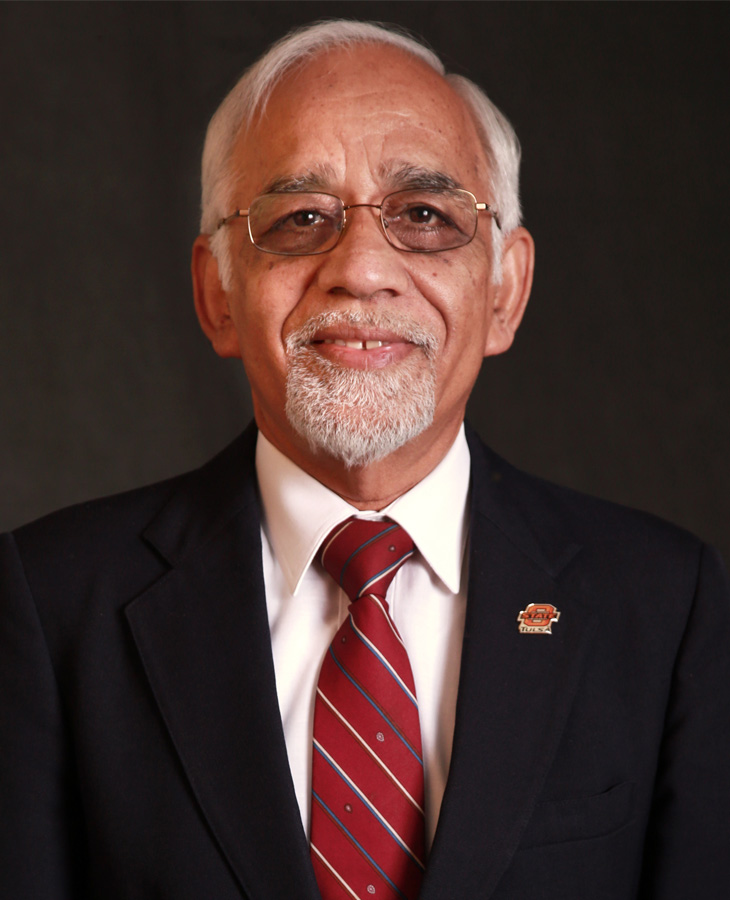
Regents Professor Singh elected to be member of National Academy of Engineering
Tuesday, February 13, 2024
Media Contact: Desa James | Communications Coordinator | 405-744-2669 | desa.james@okstate.edu
Oklahoma State University professor Raj Singh has been elected as a member of the National Academy of Engineering. He will be inducted into the NAE at the academy's annual meeting to be held on Sept. 28-30, 2024.
Dr. Singh is a Regents Professor in the College of Engineering, Architecture and Technology where he also served as the founding department head of the School of Materials Science and Engineering at OSU-Tulsa. He obtained his Sc.D. degree in ceramics from Massachusetts Institute of Technology. He worked at Argonne National Laboratory, GE-R&D Center and the University of Cincinnati before his current position.
The election to membership of NAE is based on Singh’s outstanding contributions to the discipline of MSE and the pioneering invention of the ceramic matrix composite.

Singh is a world expert on ceramic matrix composites (CMCs) and has demonstrated an innate ability to invent new materials and their novel processing. He has made seminal and transformative scientific and technological contributions to the field of CMCs and their applications in jet engines. He pioneered the development of the patented melt-infiltration (MI) process technology for making fully dense, net-shape and damage-tolerant silicon carbide fiber-reinforced CMCs.
This game-changing, unique and inherently simple MI process has led to their widespread use and commercialization by GE-Aviation since 2016 and accumulated more than 20 million flight hours in LEAP engines for Airbus, Boeing 737 and 777, and COMAC aircraft. These are the world’s first commercial jet engines with CMCs used as structural turbine components for reducing weight, enhancing engine efficiency, offering societal benefits through reduced CO2/NOx emissions, and creating multibillion-dollar new businesses because of Singh’s pioneering inventions.
“When entering a college of engineering, I chose the field of materials science and engineering because I was always fascinated by how materials are made from naturally available raw materials,” Singh said. “After my undergraduate studies in metallurgical engineering, I decided to pursue graduate studies because I was quite fascinated by how new materials can be created that may not exist today but can revolutionize technology and create products with unsurpassed properties.
"I was fortunate to be admitted to MIT where I received my Sc.D. degree. My area of research at MIT was on non-metallic materials or ceramics and I learned many skills working under the guidance of world-class professors. MIT makes students not only learn new skills but also encourages students to be innovative towards creating new materials and products to impact society and industries. This is where I started to employ my skills and knowledge of ceramics to discover new materials such as a new class of ceramic matrix composite materials.”
Singh is also a fellow member of the National Academy of Inventors, the American Ceramic Society, the ASM International, and the Graduate School at UC. He has received many awards such as the most recent Rishi Raj Medal of the ACerS, Regents Professor (OSU), Williams Chair (OSU), Albert Sauveur Award (ASM), GE-Awards of Whitney Gallery of Technical Achievers for MI-CMC Technology, publications, bronze-silver-gold-Patent Medallions, and distinguished service awards from universities, industry and national laboratory organizations.
He made scientific and technological contributions through 350 research articles, 27 granted patents, and books in the fields of CMCs, diamond films, BNNT, electrolyte retainer for molten carbonate fuel cell, electrolyte for Na-S batteries, self-healing glass seals and electrolyte and electrodes for solid oxide fuel cell and ferroelectric ceramics displaying large (0.8%) strain. Singh’s current research interests are in the processing and properties of nanomaterials for quantum devices, fuel cells, batteries, supercapacitors, medicine and smart systems.
“Dr. Raj Singh’s election to the National Academy of Engineering is among the highest recognition that an engineer can receive,” said Dr. John Veenstra, interim dean of CEAT. “It is clear recognition by his peers of his significant contributions to the profession. He is a tremendous asset to CEAT and reflects the quality of CEAT faculty by having such a pre-eminent scholar in its ranks. A career of demonstrated sustained excellence is the hallmark of NAE members, and Dr. Singh’s academic record is unmistakable evidence of this trait.”
Singh said it is most exciting and professionally satisfying to be elected as a member of the NAE
"It is the highest distinction and recognition that an engineer can achieve and is recognized as such worldwide," he said.
When asked about the best part of his job, Singh said “the best part of my job is to help educate the best possible engineers and impart knowledge of the discipline of materials science and engineering. I want to encourage students in the engineering field to be curious, persevering, creative, inventive, and passionate about their field. Ultimately, use your knowledge and skills to create new materials and products to benefit society, the nation, and the world. Never forget to be curious and inventive. It should be a lifelong pursuit.”
The NAE is a private, independent, nonprofit institution that provides engineering leadership in service to the nation. The mission of the National Academy of Engineering is to advance the welfare and prosperity of the nation by providing independent advice on matters involving engineering and technology, and by promoting a vibrant engineering profession and public appreciation of engineering.
The NAE has more than 2,000 peer-elected members and international members, senior professionals in business, academic and government who are among the world’s most accomplished engineers. They provide leadership and expertise for numerous projects focused on the relationships between engineering, technology and the quality of life.
